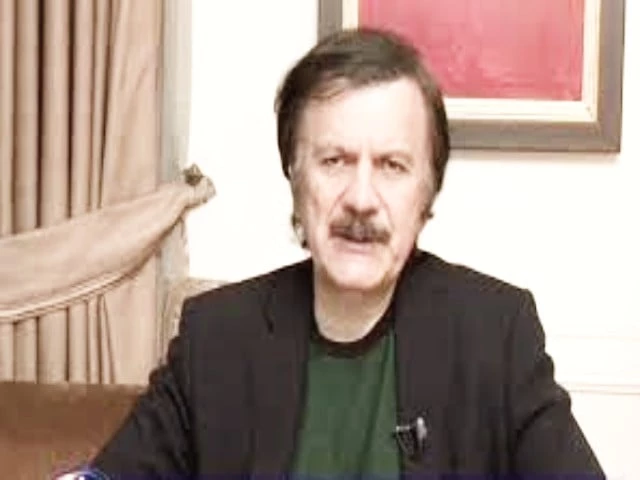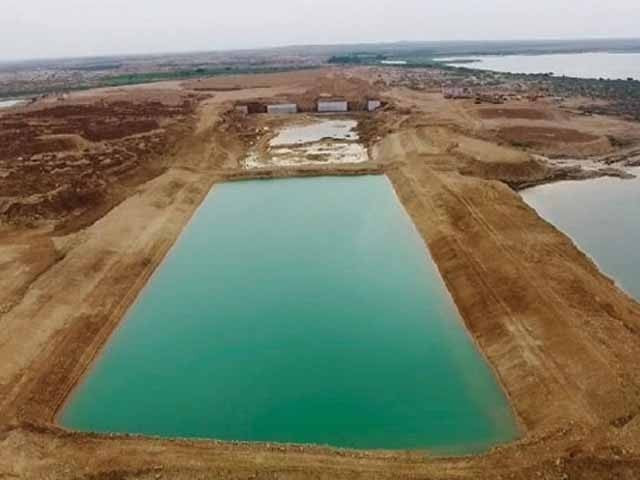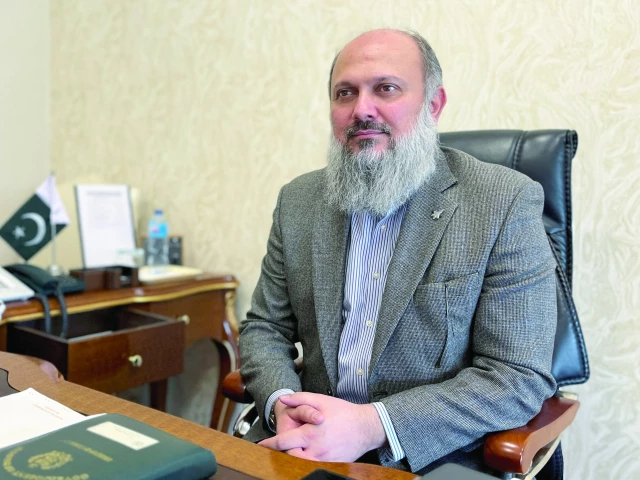Business
Ford CEO Jim Farley eyes further improvements after five years of ‘surprises,’ including investor returns

Jim Farley, president and chief executive officer of Ford Motor Co., at Ford Pro Accelerate in Detroit, Michigan, US, on Tuesday, Sept. 30, 2025.
Jeff Kowalsky | Bloomberg | Getty Images
DETROIT — “A lot of surprises.” That’s how Ford Motor CEO Jim Farley described his past five years leading the Detroit automaker, which he believes now has a solid foundation.
For Farley, who marks his fifth anniversary as CEO on Wednesday, there have been industry-wide problems to deal with, as well as Ford-specific issues that the company is still in the process of navigating.
The 63-year-old CEO has been working to make Ford more capital efficient, improve quality to reduce recall and warranty costs, and grow profit margins. That’s on top of industry-wide concerns about changing regulations, including tariffs, and shifting dynamics in electric and autonomous vehicle strategies.
“I think there were certainly a lot of surprises,” Farley told CNBC on the sidelines of a Ford event Wednesday in Detroit. “I would say what I’m most proud of is the team I built, together with [Ford Chair Bill Ford], as well as the foundation.”
Farley said it’s still going to “take more work,” but the company has a good base after years of restructuring to perform better than it has under his tenure thus far. He’s optimistic about Ford continuing to improve the company’s overall performance and grow shareholder value.
“We need to get more capital efficient. We need to have higher margins than 4% or 5%, and we we need to be more resilient to economic cycle,” Farley said, adding some recent changes in regulations from the Trump administration may be more beneficial than Wall Street expects for Ford.
Investor ‘surprise’
Despite the company’s ongoing challenges, Ford stock has been a surprising return for investors that have stuck with the automaker, which remains a “hold” based on average ratings of Wall Street analysts compiled by FactSet.
While Ford’s stock price hasn’t increased as much as General Motors, Tesla or the overall S&P 500 index over the past five years, its total shareholder return — including a historically strong dividend — has made it a better investment than many of its peers.
Auto stocks since October 2020
Ford’s total shareholder return over the past five years is roughly 134%, according to FactSet. That tops its largest global competitors other than Tesla – at 211% – over that time period.
GM, Ford’s closest rival, has a total return of about 113% over that time period — in line with the S&P 500, according to Factset. U.S.-listed shares of Toyota Motor, meanwhile, had a cumulative total return of 61%, while Honda Motor shares had a total return of 51%.
On a per share basis, Ford stock closed Tuesday at $11.96 per share, up roughly 80% since Farley became CEO on Oct. 1, 2020. That compares with Tesla, up 211% to nearly $445; GM increasing 106% to roughly $61; and the overall S&P 500 index with a 99% increase since then.
Farley has managed to woo Wall Street more than his two most recent predecessors — both of whom departed the company after double-digit losses in Ford’s stock price.
Farley became the head of Ford amid more than decade lows in the company’s stock price following the onset of the coronavirus pandemic in the U.S. He took over from CEO Jim Hackett, who was recruited by Chair Bill Ford to replace longtime executive Mark Fields.
Ford’s stock under Hackett, ex-CEO of furniture maker Steelcase, declined roughly 40% during his tenure from May 2017 through September 2020. It was slightly better under Fields’ roughly three-year tenure, when the stock declined around 35%.
The stock’s best performance in the past 25 years occurred under CEO Alan Mulally, from September 2006 through July 2014, when shares jumped roughly 178%.
Ford’s stock saw its lowest point under Farley when he took over the company in 2020. Its high during the past five years was $25.87 per share in January 2022, which occurred during the automaker’s push into electric vehicles such as the F-150 Lightning and notable upgrades.
At that time, Ford’s market value topped $100 billion for the first time ever. It’s now less than half that around $48 billion, with the stock off 54% from that high. That compares to GM’s market cap of about $58 billion.
Road ahead
To achieve further upside, the company will need to address several factors, including quality and recall issues as well as costs — areas Farley has tried to combat for years.
Ford has spent billions of dollars on warranty and recall problems in recent years, setting industry-wide records for the number of recalls in 2025.
“To justify further upside for Ford it would require a multiple re-rating, which we believe may be a challenge,” Barclays analyst Dan Levy said in a Sept. 12 investor note, citing overhangs of structural costs, quality and recalls. “The ongoing cycle of recalls remains a challenge, and it’s unclear when this cycle might end.”
While there have been improvements, the company remains at a disadvantage to its peers when it comes to costs.
In 2023, Ford said it faced an overall cost disadvantage of between $7 billion and $8 billion, including $3 billion to $4 billion in material costs and $3 billion in structural costs, in addition to ongoing recall costs that the company considers “special items.”
Since then, Ford has been working to trim that figure and improve its product and quality, including closing roughly $1.5 billion in its material cost gap last year. The company, executives said in July, is on track for another $1 billion reduction in costs this year, excluding tariff impacts — increasing that figure to $2.5 billion.
“GM’s still better than us on cost, but we made a lot of progress this year,” Farley said Tuesday. “First time, without restructuring, we got a billion year-over-year cost down, which is a big deal.”
Ford Motor President and CEO Jim Farley talks about the Mustang GTD during the press day of the North American International Auto Show in Detroit, Michigan, U.S. September 13, 2023.
Rebecca Cook | Reuters
Amid Ford’s pullback in costs, the company under Farley has altered its plans for all-electric vehicles, including taking a nearly $2 billion hit last year for delaying and canceling EVs.
Farley on Tuesday said he “wouldn’t be surprised” if sales of EVs fell from a market share of around 10% to 12% in September — which is expected to be a record — to 5% this month after a federal incentive program for electric vehicles ended.
Along with its self-inflicted cost issues, Ford has been managing tariffs, electrification and a volatile regulatory landscape. There have been a slew of federal changes but some, such as the elimination of national emissions penalties, are assisting the automaker in offsetting expected tariff impacts of $3 billion this year.
“We’ve got to work through a couple of these policy issues that could be a big tailwind for the company,” Farley said Tuesday, adding its commercial Pro business remains another highlight. “I don’t think the market has understood the benefit of the EPA rule change. It’s going to be big for our industry, for companies like Ford.”
Business
Private sector data: Over 2 lakh private companies closed in 5 years; govt flags monitoring for suspicious cases – The Times of India

NEW DELHI: The government on Monday said that over the past five years, more than two lakh private companies have been closed in India.According to data provided by Minister of State for Corporate Affairs Harsh Malhotra in a written reply to the Lok Sabha, a total of 2,04,268 private companies were shut down between 2020-21 and 2024-25 due to amalgamation, conversion, dissolution or being struck off from official records under the Companies Act, 2013.Regarding the rehabilitation of employees from these closed companies, the minister said there is currently no proposal before the government, as reported by PTI. In the same period, 1,85,350 companies were officially removed from government records, including 8,648 entities struck off till July 16 this fiscal year. Companies can be removed from records if they are inactive for long periods or voluntarily after fulfilling regulatory requirements.On queries about shell companies and their potential use in money laundering, Malhotra highlighted that the term “shell company” is not defined under the Companies Act, 2013. However, he added that whenever suspicious instances are reported, they are shared with other government agencies such as the Enforcement Directorate and the Income Tax Department for monitoring.A major push to remove inactive companies took place in 2022-23, when 82,125 companies were struck off during a strike-off drive by the corporate affairs ministry.The minister also highlighted the government’s broader policy to simplify and rationalize the tax system. “It is the stated policy of the government to gradually phase out exemptions and deductions while rationalising tax rates to create a simple, transparent, and equitable tax regime,” he said. He added that several reforms have been undertaken to promote investment and ease of doing business, including substantial reductions in corporate tax rates for existing and new domestic companies.
Business
Pakistan’s Textile Exports Reach Historic High in FY2025-26 – SUCH TV

Pakistan’s textile exports surged to $6.4 billion during the first four months of the 2025-26 fiscal year, marking the highest trade volume for the sector in this period.
According to the Pakistan Bureau of Statistics (PBS), value-added textile sectors were key contributors to the growth.
Knitwear exports reached $1.9 billion, while ready-made garments contributed $1.4 billion.
Significant increases were observed across several commodities: cotton yarn exports rose 7.74% to $238.9 million, and raw cotton exports jumped 100%, reaching $2.6 million from zero exports the previous year.
Other notable gains included tents, canvas, and tarpaulins, up 32.34% to $53.48 million, while ready-made garments increased 5.11% to $1.43 billion.
Exports of made-up textile articles, excluding towels and bedwear, rose 4.17%, totaling $274.75 million.
The report also mentioned that the growth in textile exports is a result of improved global demand and stability in the value of the Pakistani rupee.
Business
Peel Hunt cheers ‘positive steps’ in Budget to boost London market and investing

UK investment bank Peel Hunt has given some support to under-pressure Chancellor Rachel Reeves over last week’s Budget as it said efforts to boost the London market and invest in UK companies were “positive steps”.
Peel Hunt welcomed moves announced in the Budget, such as the stamp duty exemption for shares bought in newly listed firms on the London market and changes to Isa investing.
It comes as Ms Reeves has been forced to defend herself against claims she misled voters by talking up the scale of the fiscal challenge in the run-up to last week’s Budget, in which she announced £26 billion worth of tax rises.
Peel Hunt said: “Following a prolonged period of pre-Budget speculation, businesses and investors now have greater clarity from which they can start to plan.
“The key measures were generally well received by markets, particularly the creation of additional headroom against the Chancellor’s fiscal rules.
“Initiatives such as a stamp duty holiday on initial public offerings (IPOs) and adjustments to the Isa framework are intended to support UK capital markets and encourage investment in British companies.
“These developments, alongside the Entrepreneurship in the UK paper published simultaneously, represent positive steps toward enhancing the UK’s attractiveness for growth businesses and long-term investors.”
Ms Reeves last week announced a three-year stamp duty holiday on shares bought in new UK flotations as part of a raft of measures to boost investment in UK shares.
She also unveiled a change to the individual savings account (Isa) limit that lowers the cash element to £12,000 with the remaining £8,000 now redirected into stocks and shares.
But the Chancellor also revealed an unexpected increase in dividend tax, rising by 2% for basic and higher rate taxpayers next year, which experts have warned “undermines the drive to increase investing in Britain”.
Peel Hunt said the London IPO market had begun to revive in the autumn, although listings activity remained low during its first half to the end of September.
Firms that have listed in London over recent months include The Beauty Tech Group, small business lender Shawbrook and tinned tuna firm Princes.
Peel Hunt added that deal activity had “continued at pace” throughout its first half, with 60 transactions announced across the market during that time and 10 active bids for FTSE 350 companies, as at the end of September.
Half-year results for Peel Hunt showed pre-tax profits jumped to £11.5 million in the six months to September 30, up from £1.2 million a year earlier, as revenues lifted 38.3%.
Peel Hunt said its workforce has been cut by nearly 10% since the end of March under an ongoing savings drive, with full-year underlying fixed costs down by around £5 million.
Steven Fine, chief executive of Peel Hunt, said: “The second half has started strongly, with the group continuing to play leading roles across both mergers and acquisitions and equity capital markets mandates.”
-

 Sports1 week ago
Sports1 week agoWATCH: Ronaldo scores spectacular bicycle kick
-

 Entertainment1 week ago
Entertainment1 week agoWelcome to Derry’ episode 5 delivers shocking twist
-

 Politics1 week ago
Politics1 week agoWashington and Kyiv Stress Any Peace Deal Must Fully Respect Ukraine’s Sovereignty
-

 Business1 week ago
Business1 week agoKey economic data and trends that will shape Rachel Reeves’ Budget
-

 Politics1 week ago
Politics1 week ago53,000 Sikhs vote in Ottawa Khalistan Referendum amid Carney-Modi trade talks scrutiny
-

 Tech6 days ago
Tech6 days agoWake Up—the Best Black Friday Mattress Sales Are Here
-

 Fashion1 week ago
Fashion1 week agoCanada’s Lululemon unveils team Canada kit for Milano Cortina 2026
-

 Tech1 day ago
Tech1 day agoGet Your Steps In From Your Home Office With This Walking Pad—On Sale This Week


1729471601-0/image-(8)1729471601-0-640x480.webp)









